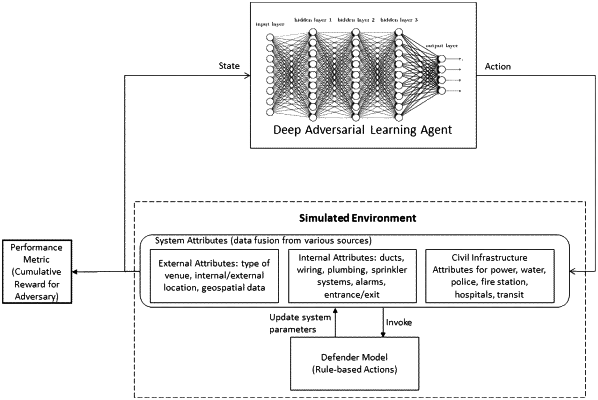| CPC G08B 21/02 (2013.01) [G06F 18/217 (2023.01); G06N 3/04 (2013.01); G06N 3/08 (2013.01); G06Q 90/20 (2013.01)] | 20 Claims |

|
1. A method for reducing a threat footprint for an area-of-interest, the method comprising:
identifying an area-of-interest, wherein the area-of-interest comprises one or more entry/exit points;
determining a base risk score for the area-of-interest, wherein the base risk score considers one or more internal attributes of the area-of-interest and one or more external attributes of the area-of-interest;
deriving a graphical representation of the area-of-interest and one or more defense strategies for the area-of-interest;
training an adversarial reinforcement learning agent to identify one or more successful attack paths on the graphical representation of the area-of-interest that are effective in bypassing the one or more defense strategies for the area-of-interest;
determining an active risk score based upon the one or more successful attack paths identified by the adversarial reinforcement learning agent; and
determining one or more mitigation actions that will reduce the active risk score for the area-of-interest based upon the base risk score and one or more predetermined resource constraints, wherein reducing the active risk score reduces a threat footprint for the area-of-interest.
|